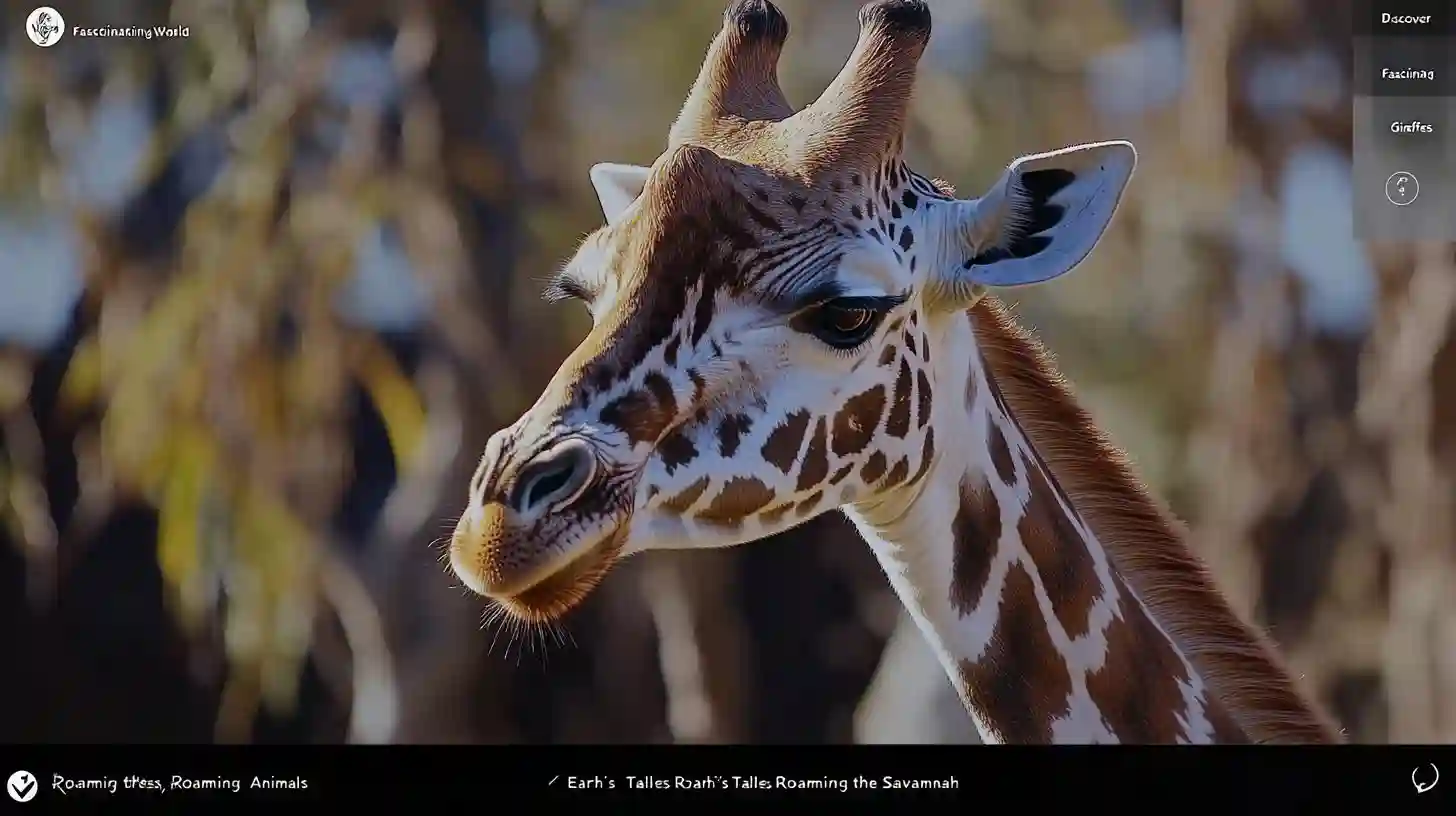
Giraffes, renowned as the tallest mammals on Earth, gracefully roam the expansive savannahs of Africa, captivating the hearts and minds of wildlife enthusiasts and casual observers alike. Their iconic long necks and unique patterns have made them a symbol of the diverse wildlife that graces the African landscape. With legs that can reach lengths of six to eight feet, these gentle giants possess an extraordinary frame that supports their towering stature, allowing them to thrive in habitats where few other creatures can reach the tender leaves of acacia trees and other flora.
The giraffe’s long neck, an evolutionary marvel, serves a dual purpose. Predominantly, it enables the animals to access the high foliage typically beyond the reach of smaller herbivores, providing them with a competitive advantage in their search for food. Interestingly, the long neck also plays a crucial role in social interactions among males, particularly during mating contests. Male giraffes engage in a behavior known as "necking," where they swing their necks and heads to strike one another. This display of strength and endurance is instrumental in establishing dominance and attracting potential mates.
Additionally, the giraffe’s distinct coat pattern serves as a form of camouflage within the dappled light of their natural habitat. The irregular patches of color on their skin vary greatly among different subspecies, ranging from light tan to a deeper reddish-brown, with patches that can be brown, white, or even nearly black. These patterns not only aid in blending into the environment but also play a role in helping individuals recognize one another within their herds, enhancing social bonds among the members.
Among their many remarkable traits, giraffes possess an impressive circulatory system that efficiently manages blood flow to their long necks. Their hearts, which can weigh as much as twenty-five pounds, must exert considerable force to pump blood all the way up to the brain. This unique adaptation ensures that the cerebral organs receive adequate oxygen and nutrients, even when the giraffe's head is lowered to drink or when they are bending down to graze on lower vegetation. Drinking water requires a considerable amount of caution, as bending down exposes them to potential dangers from predators like lions and hyenas that lurk nearby.
Giraffes typically live in loose, social groups called towers, which consist of a combination of males, females, and their young. Unlike many other species, towers are not rigidly structured, allowing for a flexible social dynamic. These majestic mammals often engage in mutual grooming, strengthening the bonds between individuals and enhancing social cohesion. Female giraffes tend to form close-knit relationships and can often be observed interacting with their calves, teaching them essential survival skills as they mature.
Reproduction in giraffes is equally intriguing, with females displaying specific behaviors when they are in estrus to attract potential mates. Mating typically involves courtship displays and can often lead to a lengthy gestation period of approximately fifteen months, resulting in a single calf. Newborn giraffes stand tall within just a few hours of birth, ready to join the herd, and adapt to their new surroundings. The protective instincts of the mother and other members of the tower play a crucial role in ensuring the survival of the young as they navigate the challenges of life in the wild.
Sadly, giraffes face numerous threats in the modern world. Habitat loss due to agriculture, human encroachment, and poaching significantly impact their populations. Conservation efforts are underway throughout Africa to safeguard their habitats and promote the coexistence of wildlife and humans. Organizations dedicated to wildlife preservation continue to raise awareness about the unique challenges facing giraffes, emphasizing the importance of protecting these iconic creatures and their ecosystems.
While giraffes are often perceived as serene giants, their lives are filled with fascinating complexities that reveal how they navigate a world where height and grace are essential to survival. From their unique feeding habits to their social behaviors, giraffes remain incredible examples of adaptation and resilience within the wild. Each sighting of a majestic giraffe peacefully munching on treetops serves as a reminder of the beauty of nature, the importance of biodiversity, and the ongoing efforts required to preserve these extraordinary animals for future generations to appreciate.